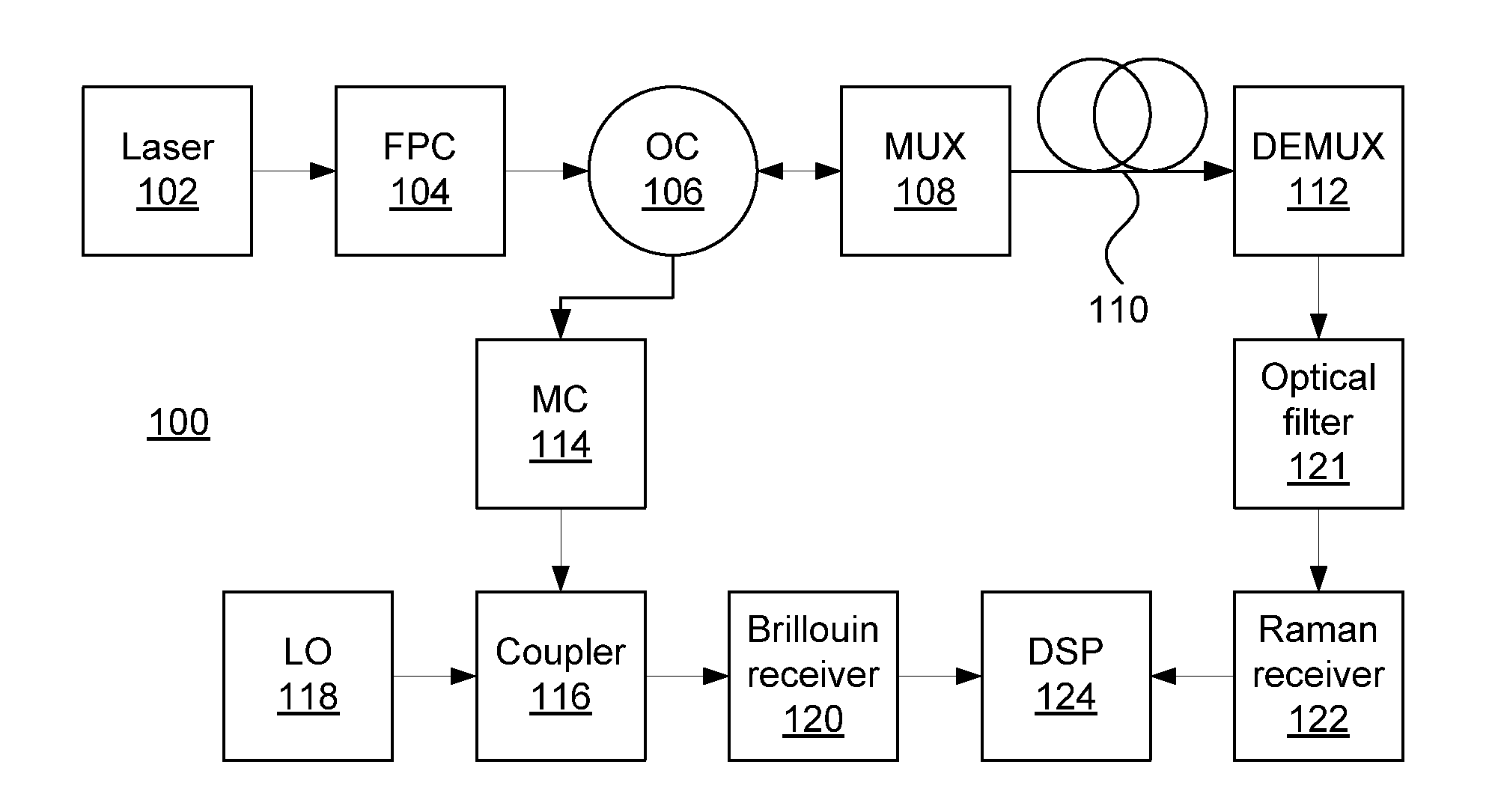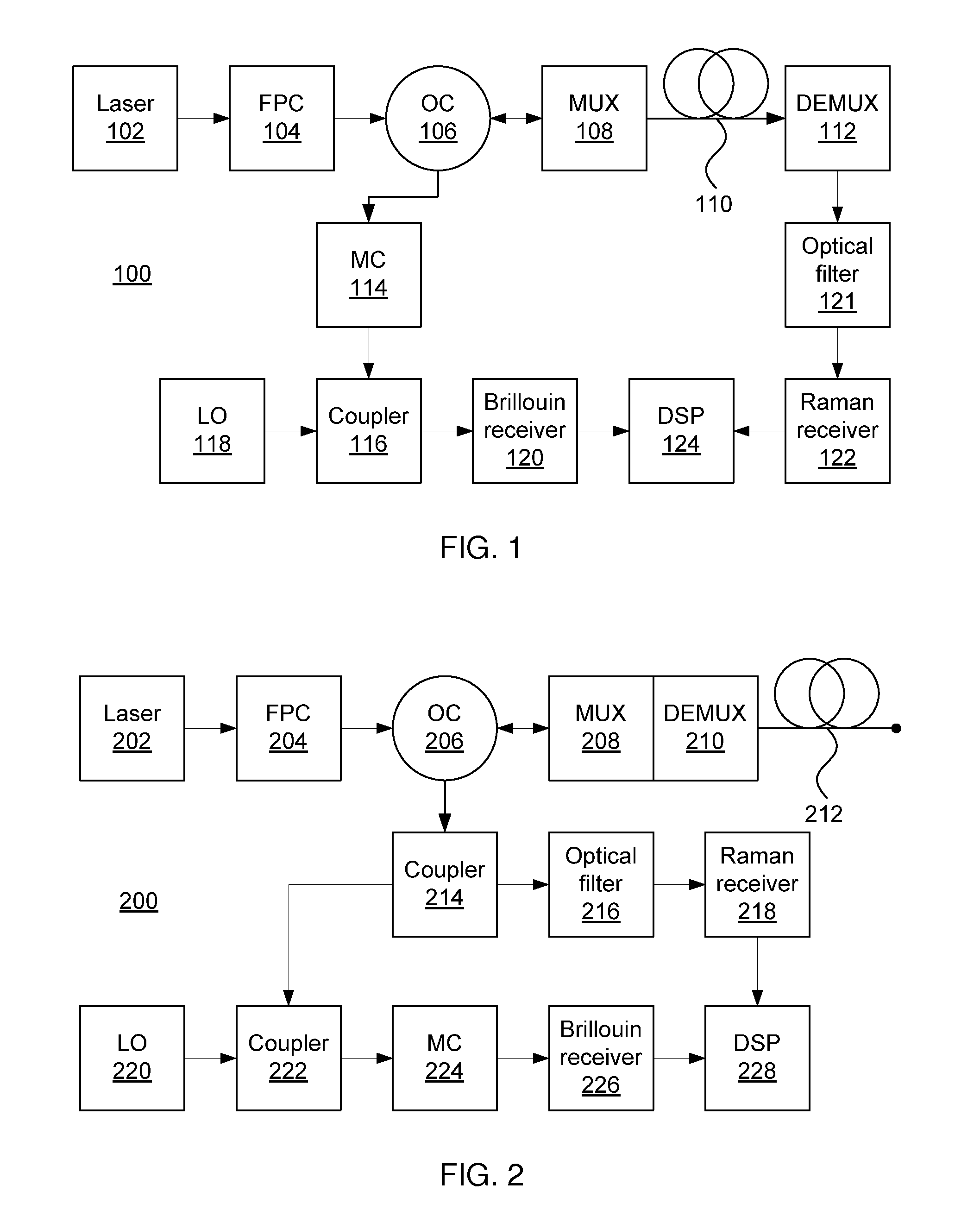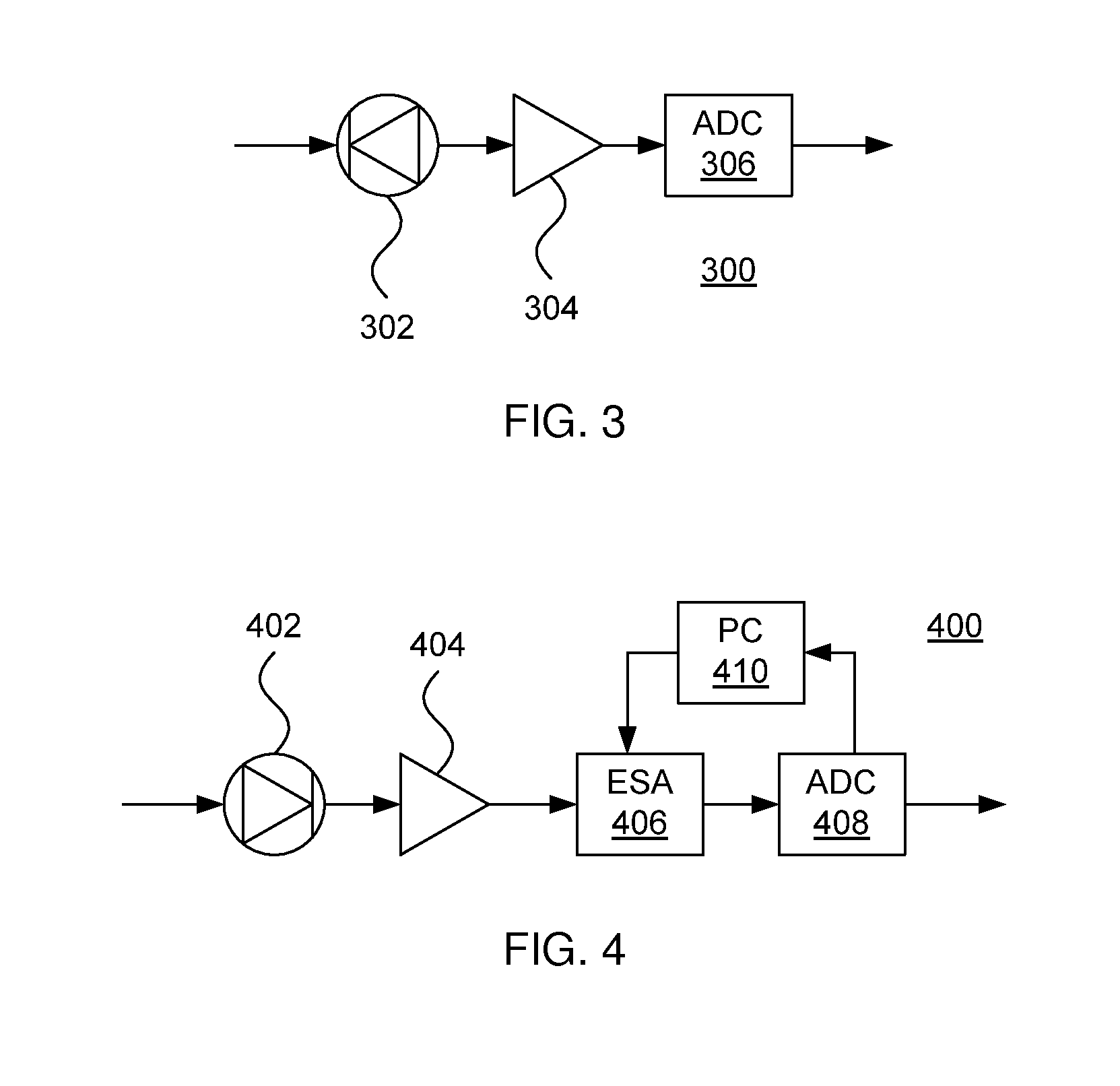Hybrid raman and brillouin scattering in few-mode fibers
a fiber and hybrid technology, applied in the direction of force measurement, force measurement, force measurement, etc., can solve the problems of strain, difficult to measure, and limited performance of two fully distributed fiber-optic scattering sensing schemes,
- Summary
- Abstract
- Description
- Claims
- Application Information
AI Technical Summary
Benefits of technology
Problems solved by technology
Method used
Image
Examples
Embodiment Construction
[0016]Embodiments of the present invention provide hybrid Raman-Brillouin sensing for highly accurate distributed strain and temperature sensing. The sensors described herein use two-mode fibers, few-mode fibers, or multi-mode fibers to make Raman and Brillouin measurements on orthogonal spatial modes and provide simultaneous temperature and strain sensing. Raman anti-Stokes intensity is measured in one mode while Brillouin frequency shift is measured in another mode, providing higher sensitivity, better resolution, and faster operation.
[0017]In one embodiment, a temperature profile is generated using a forward Raman signal in one mode and a second temperature / strain profile with backscattered Brillouin light in another mode or modes. By fitting a Lorentzian curve to each spectrum, the peak frequency is evaluated at each point along the fiber. This provides a strain profile based on the first temperature profile and further provides additional resolution on the first temperature pro...
PUM
 Login to View More
Login to View More Abstract
Description
Claims
Application Information
 Login to View More
Login to View More - R&D
- Intellectual Property
- Life Sciences
- Materials
- Tech Scout
- Unparalleled Data Quality
- Higher Quality Content
- 60% Fewer Hallucinations
Browse by: Latest US Patents, China's latest patents, Technical Efficacy Thesaurus, Application Domain, Technology Topic, Popular Technical Reports.
© 2025 PatSnap. All rights reserved.Legal|Privacy policy|Modern Slavery Act Transparency Statement|Sitemap|About US| Contact US: help@patsnap.com



